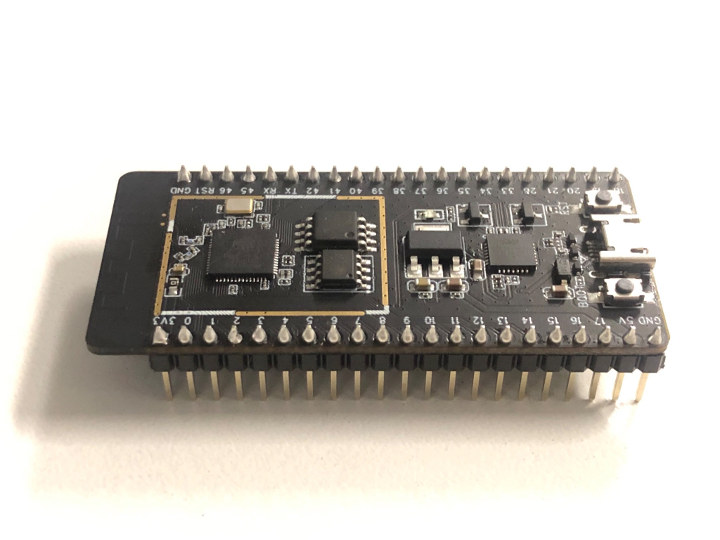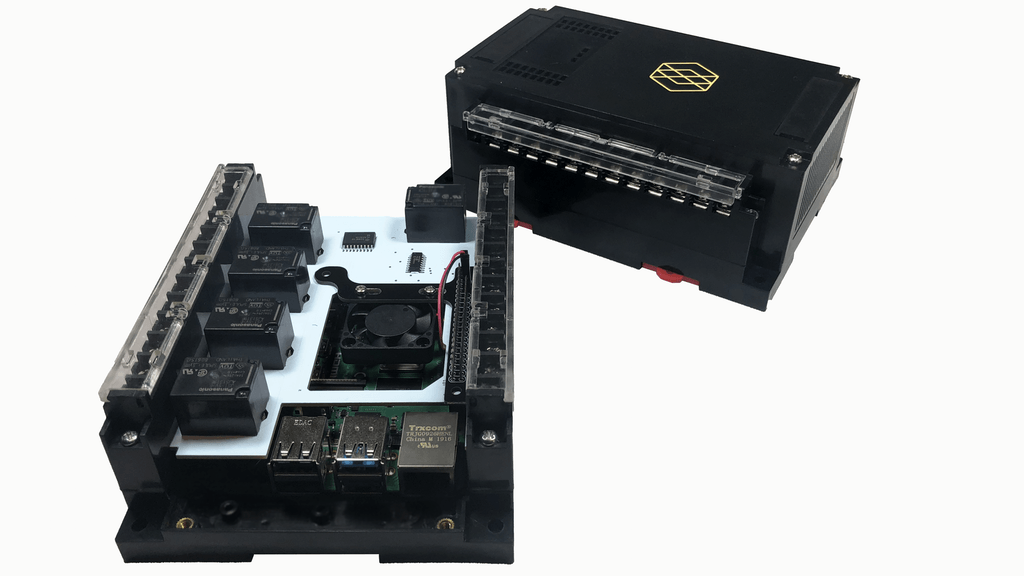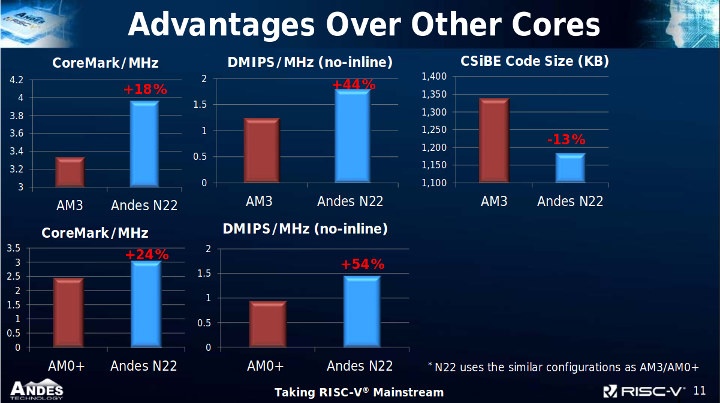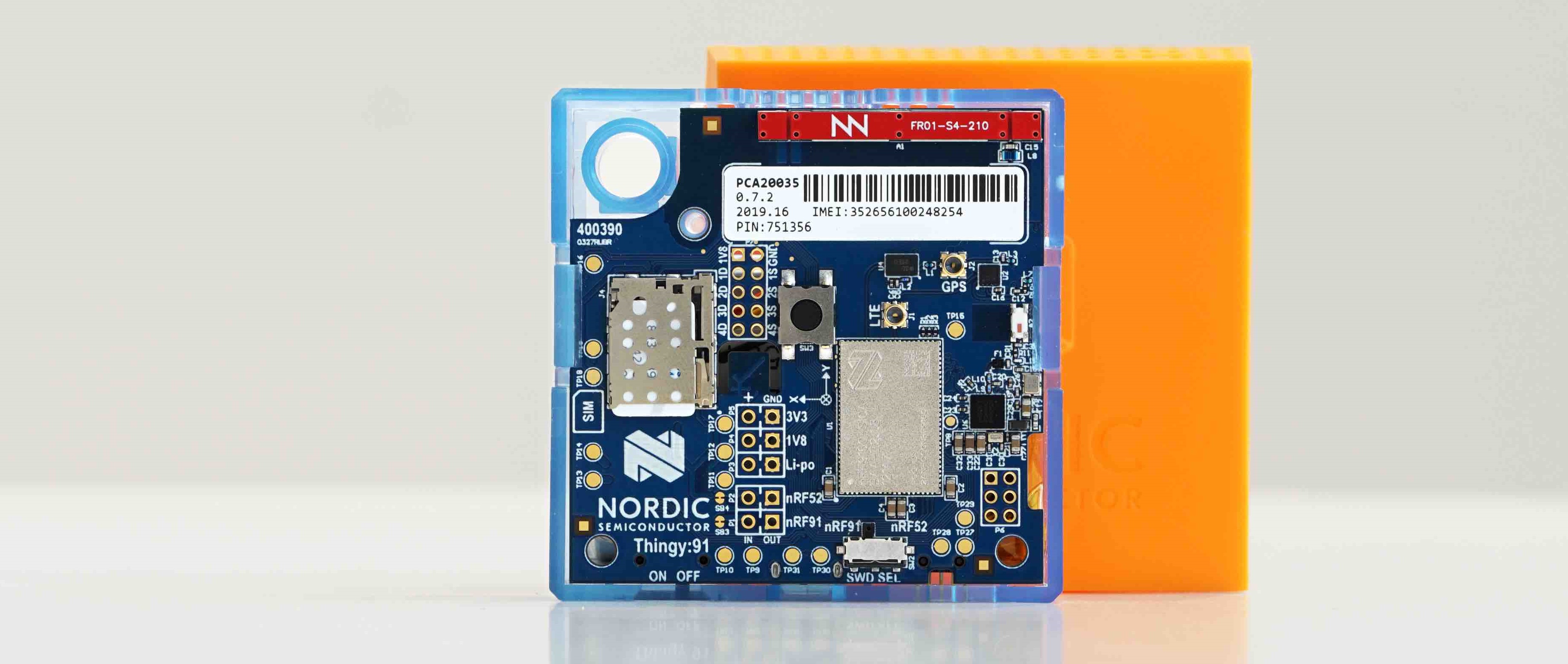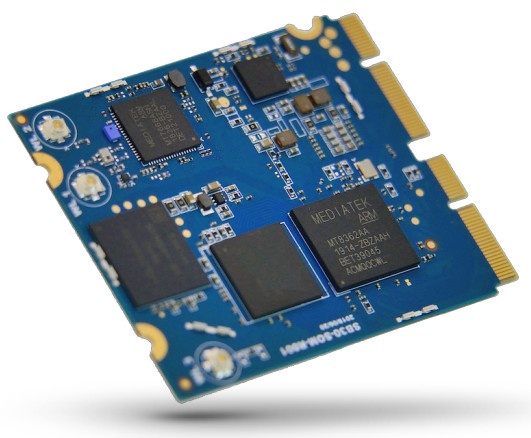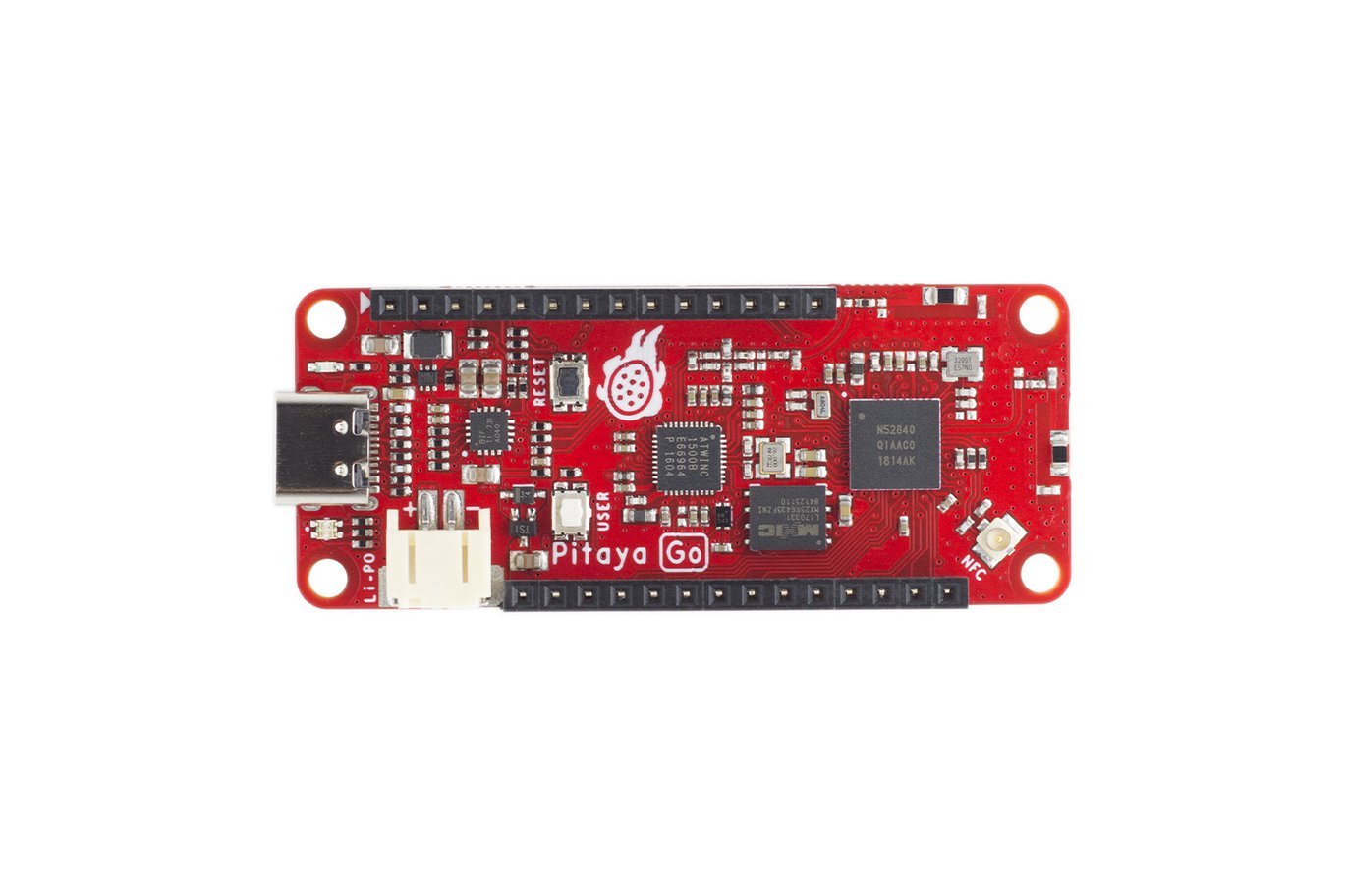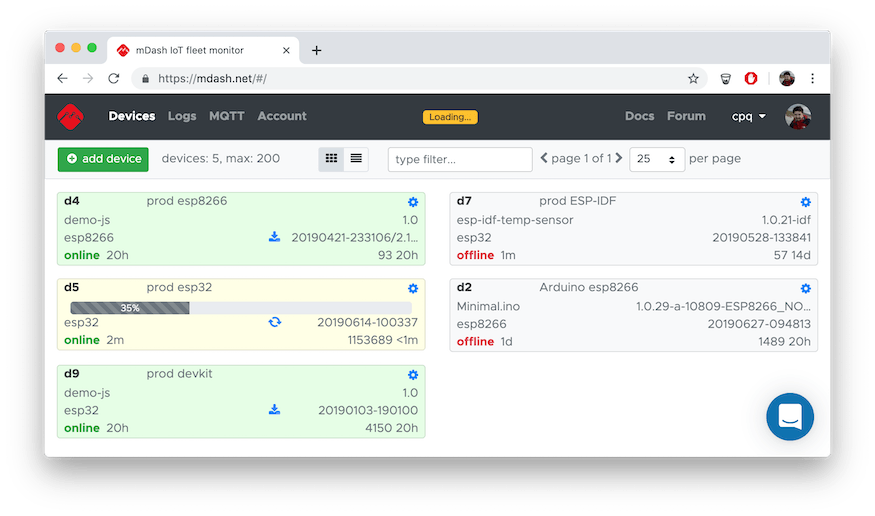Last may Espressif Systems unveiled ESP32-S2 secure WiFi processor with a single Xtensa LX7 core clocked at 240 MHz, and the first ESP32 processor to come with a built-in USB (OTG) interface, as well as some new features such as WiFi Time-of-Flight (ToF), hardware security, LCD RGB & camera interfaces, and more. Note that contrary to other ESP32 processors launched so far, ESP32-S2 does not support Bluetooth. ESP32-S2 Datasheet The processor is still not available, but there has been some interesting development in recent weeks. First the datasheet (PDF) has been released, so we’ve got to check more technical details including the processor diagram below. The main specifications have not changed, so I won’t reproduce them here, and you can check out ESP32-S2 announcement for specs. ESP32-S2 Development Boards The first ESP32-S2 development boards are also available… in Espressif Systems’ offices that is, but not quite publicly. The board above […]
Pi-oT Raspberry Pi Add-on Board Targets Commercial & Industrial IoT Automation (Crowdfunding)
USA Based Startup Builds RPi Add-on Pi-oT, a Cleveland based startup has launched a Kickstarter campaign for a Raspberry Pi add-on for commercial and industrial IoT automation. The unit is a full mountable chassis with fan and DIN-rail that extends the Pi’s GPIO with 26-pin terminal connectors and provides 5x relays, 8x ADCs, and power outputs. We have reported on a variety of uses for the Raspberry Pi SBC, from home automation to development in IoT, to hobby projects, and in education settings. It is not surprising to see an automation module developed for IoT industrial applications around the popular and powerful SBC. The Choices The Kickstarter campaign has passed its low initial target and is set to ship at the end of October. There is an early launch discount on the unit’s price of $40 for commercial and $50 for industrial backers. That early bird type special is 15% […]
AndesCore N22 RISC-V Core Supports RV32IMAC or RV32EMAC Instruction Sets
We covered Gigadevice GD32V general-purpose microcontroller with a RISC-V “Bumblebee” core last week, and I was informed that Andes Technology had recently introduced AndesCore N22 RISC-V “Bumblebee” IP core capable of supporting either RV32IMAC or RV32EMAC instruction sets. A web search did not reveal any specific information about what “Bumblebee” RISC-V cores are exactly, or maybe it’s in reference that many can be coupled in parallel. But that’s just a small detail, let’s check out in some details what AndesCore N22 core has to offer. The RISC-V core is designed for entry-level MCUs found in IoT devices and wearables, and is capable of deeply embedded protocol processing for I/O control, storage, networking, AI and AR/VR. Highlights of AndesCore N22: AndeStar V5 (RV32IMAC) / V5e (RV32EMAC) Instruction Set Architecture (ISA), compliant to RISC-V technology plus Andes extensions architectured for performance and functionality enhancements 32-bit, 2-stage pipeline CPU architecture 16/32-bit mixable instruction […]
Nordic Thingy:91 Cellular IoT Prototyping Platform Comes with 16 Sensors
Nordic Semiconductor launched the Nordic Thingy:52 back in mid-2017 in the hopes of bringing app and web developers into the hardware ecosystem as fast and easy as possible. The Nordic Thingy:52 was a Bluetooth 5 IoT sensor development kit based on the company’s nRF52832 WiSoC. Although the Nordic Thingy:52 kit is still very much available for purchase and support always available, Nordic Semiconductor has gone further launching a new development kit called the Nordic Thingy:91 targeting cellular IoT applications. The Nordic Thingy:91 is a cellular IoT prototyping platform with support for LTE-M, NB-IoT plus GPS option. Even though IoT connectivity standards like LoRaWAN, BLE, WiFi, ZigBee, and others are very much growing and expanding, Nordic Semi is fully backing cellular technology, something that has very much been available and most likely will still keep been available, and the adoption of 5G is another testimony to that. Cellular is here, and […]
MPEG Video Coding for Machines (VCM) is in the Works
A video codec for machines seems like a good topic for the first of April, or an article on the Onion. But based on a recent press release by Gyrfalcon Technology, this may become a real thing as the company partnered with China Telecom, and proposed a new video codec called “Video Coding for machines” (VCM) that provides compression coding for machine vision and human-machine hybrid vision. Apparently a recent study published by Cisco in 2018, humans will become bit players in the “video watching business”, and Machine-to-Machine (M2M) applications will represent the greatest usage of Internet video traffic over the next four years. So the goal of the VCM group will be to establish a new standard that will improve the previous generation video coding and decoding standards such as H.264 (AVC), H.265 (HEVC) and H.266 (VVC). Few details are provided so far, and I can’t find any VCM […]
Innocomm Unveils MediaTek i300/i500 SoMs for IoT and AI Applications
SB30 MTK i300 and SB50 MTK i500 AI IoT Platforms Just announced by Innocomm are the SB30 and the SB50 SoMs carrying the MediaTek i300 and i500 SoC’s, and running either Linux or Android. The rundown on the systems is the MediaTek AIoT processor series has been out for some time, and we reported on the latest SoC in the MediaTek i700 article last July. Innocomm is also known for its NXP-based compute modules such as the i.MX8M Mini driven W15 and i.MX8M powered W10. MediaTek i300 Specs The MediaTek i300 (MT8362) SoC is running a Cortex-A35 power-efficient quad-core processor clocking at 1.5 GHz. The SoC is further equipped with an Imagination PowerVR Series8XE GE8300 GPU. The i300 also integrates a PMIC, an RF chip for 2.4 GHz 802.11/b/g/n as well as Bluetooth 4.0. There is support for the MediaTek MT7668 chipset for 802.11ac (WiFi 5). Rounding out the system […]
Pitaya Go is an IoT development board with multi-protocol wireless connectivity
One of the challenges in starting a new IoT project is the question of what connectivity to use. Depending on the nature of a project, there are several wired and wireless connectivity options that can be used to power a project and ensure it’s a success. We have WiFi, Bluetooth, Zigbee, Zwave, LoRa, ZigFox, Thread, NB-IoT, 3G/4G, and others. You can use from anyone, but which one to use is another thing because most development board only support 1 or 2 of those. Well, with the introduction of the Pitaya Go, you don’t have to worry so much about that decision. The Pitaya Go is an IoT development platform with multiprotocol wireless connectivity built-in. The Pitaya Go is based on the Nordic’s high-end multiprotocol SoC nRF52840 and the Microchip’s extremely low power Wi-Fi network controller ATWINC1500B. The nRF52840 SoC is the most advanced member of the nRF52 Series SoC family, and it […]
mDash Cloud platform for IoT Devices Targets ESP8266/ESP32, STM32, and TI CC3220 Wireless MCUs
Cesanta (a company based in Dublin, Ireland) recently launched mDash – an IoT cloud platform for administration of various IoT modules. This platform supports Espressif’s modules ESP32 & ESP8266, STM32 (L4,M4) and TI CC3220, and offers a bunch of features which are known to be challenging tasks in the IoT world. This includes OTA (Over-The-Air) firmware updates, remote configuration and administration, alerts and notifications, remote device control and file management. This can be achieved through 3 programming platforms – Arduino IDE, ESP-IDF and through Mongoose OS. For evaluation and testing purpose mDash offers a simulator that run as a docker container. Refer our previous post, to understand how to get started with Cesanta’s Moongoose OS for ESP8266. Basic WorkFlow mDash Library The company offers reference firmware/library for the defined hardware platforms. This been implements by using secure MQTT for communication, re-connection and initial provisioning with mDash cloud. You can find […]


